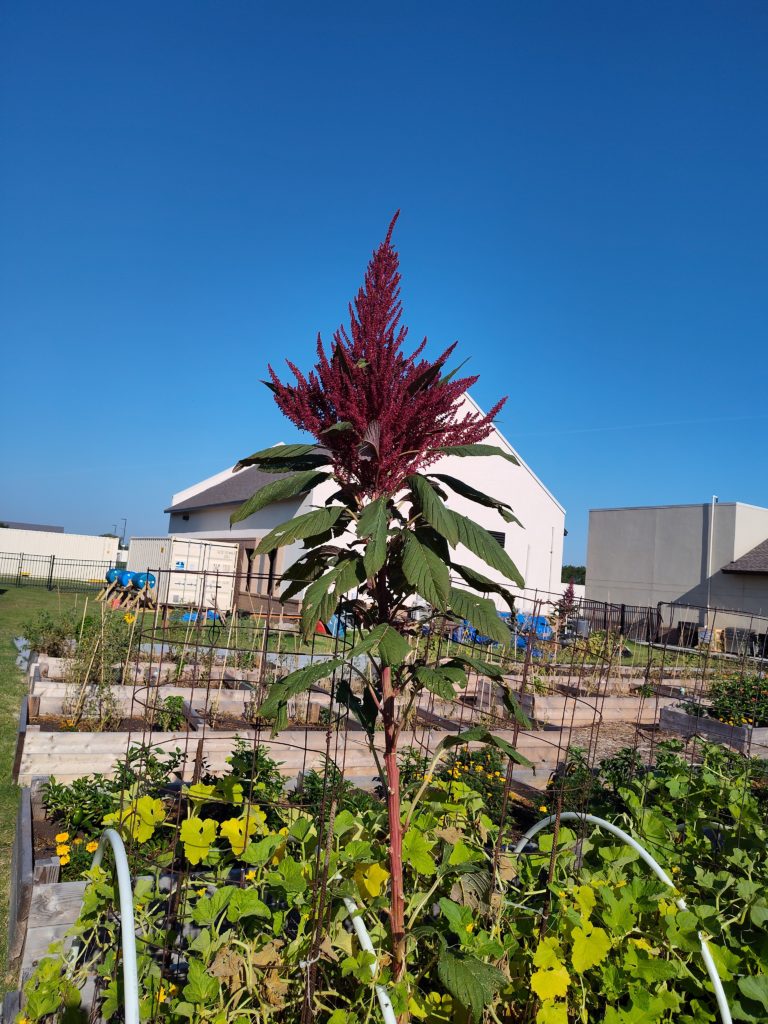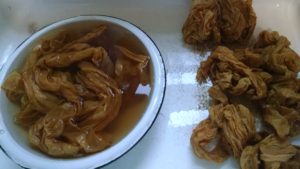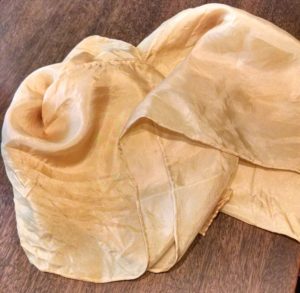In a garden that I superintend, I get the question, “So what is that tall plant with the red top growing in the garden?” It’s amaranth! Here’s a picture….

Amaranth is such a versatile plant – it is used for food (greens and seeds/grain), as a dye plant, and even a food source for some butterflies and moths.
Amaranth has quite a history as a staple food source for people, dating back thousands of years. Although it is thought to have originated in the Americas, various amaranth species (of which there are 75!) are found on six continents, according to Wikipedia.
The leaves are cooked and eaten like spinach, while the seeds are treated like a grain. Most notably, in Mexico the seeds are toasted like popcorn and mixed with honey, molasses, or chocolate to make a treat.
Amaranth can be found in Africa, as well as in parts of Asia, where the greens are popular. In Greece, the purple amaranth leaves are boiled, then served with olive oil and lemon juice.
The red top seed-head is known as Hopi Red Dye. And I intend to test it out as a dye plant in the next few weeks – I’ll report on the results when I do.
Finally, a species of amaranth has a questionable reputation – it is known familiarly as pigweed, and is viewed as a noxious weed by farmers who strive to eradicate it from their fields. But, like all amaranths, pigweed is edible.
So look for amaranth and maybe try cooking some (young, tinder) leaves.


